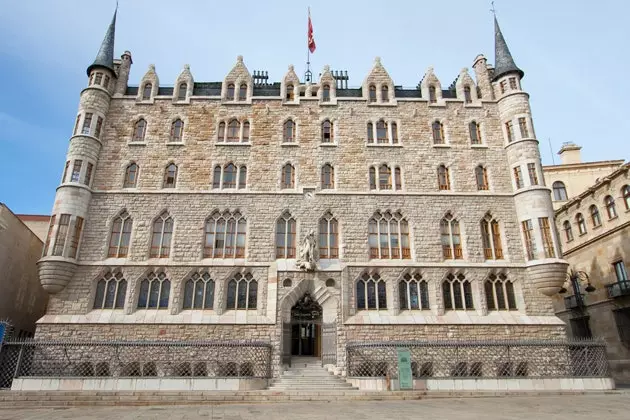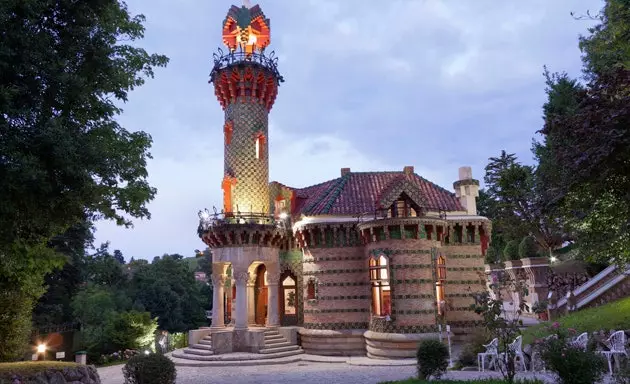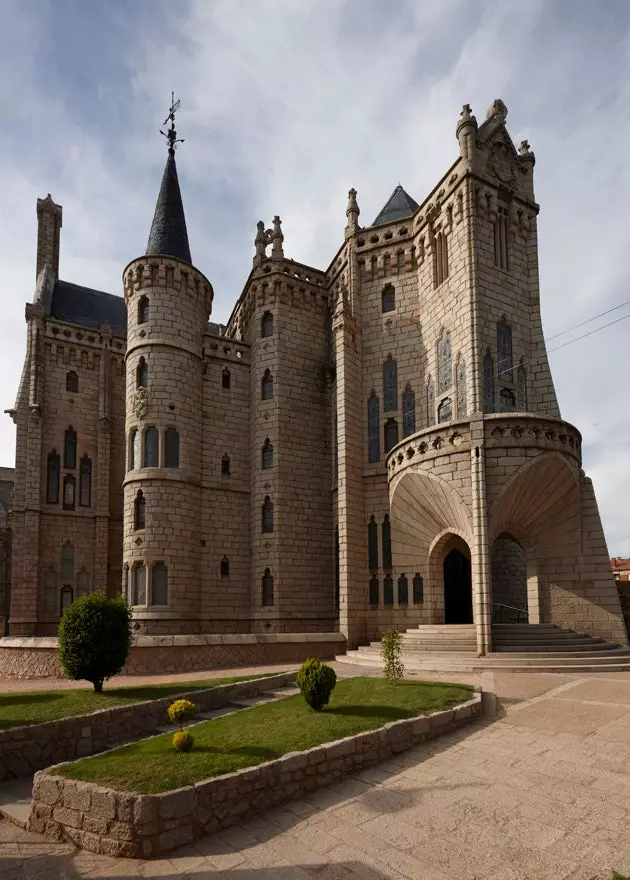
Botines House, Leon. eye! this is Gaudí, even if he doesn't look like it.
BOTINES HOUSE, LEÓN They say that the last time he accepted a job far from the Mediterranean was to win the rooms with a commission: design a building that would house the business, warehouses and homes of some prosperous textile merchants from León, but what is certain, according to what Manuel Carriedo tells us , from the Documentation Center of the bank that now occupies the building, is that the land of the city of León was acquired by its original owners long before the Episcopal Palace of Astorga burned down and its new construction was necessary. Chronological disputes aside, the truth is that here Gaudí once again exhibited his mastery by mixing Modernism and Neo-Gothic, respecting the style of a city that accepts a certain eclecticism as long as the most serious materials are used. Here he doesn't grow up, he doesn't exhibit his own imaginary, far from it. In the end, it is no longer a company headquarters , and at that time it was not the case to turn offices into works of art. That yes, had to be imposing, I had to make a good impression. And he gets it.
Today it is still the same, but the urban planning of the city has respected it a lot and has treated it with affection. He looks like he wants to say "Watch out, this is a Gaudí, even if he doesn't look like one" with the help of contemporary art sculptures and sparkling sidewalks that serve as a carpet for artist hunters. The last wink, a sculpture of the author looking at his work, which has become a treat for pranksters and Japanese who photograph themselves making faces or hugging him . Overall, it is one of the few situations in which you can 'see' Antoni outside of his homeland.
CAPRICHO OF GAUDÍ, COMILLAS This is one of the most cheerful, original and capricious works (hence, in part, his name) by the genius from Reus. Gaudí was young and his imagination was eager to unfold his ideas, to bring to reality the madness with which he had been drawing the basic lines of his Modernism. He came to Comillas to be Joan Martorell's assistant , the pioneer of this style in Spain, in the construction of the Palace of Sobrellano. The owner of this palace he wanted to build an exotic chalet to the side and contacted the outstanding disciple of Martorell. And Gaudí responded with a vengeance, to the delight and delight of everyone who reaches his feet.

El Capricho de Gaudí, like a chocolate house
The first impression offered by this house is to be a toy, a Walt Disney-style palace . And yet it was built to serve as a summer residence. The stylistic and artistic freedom that was breathed and promoted at the end of the 19th century was the great culprit of its idyllic and mysterious appearance. The key? Resources like tiles with floral, animal and musical motifs (product of its owner's fondness for this art) that cover the building. To that we must add a persian minaret from which the view to the beach and the port is controlled and a garden with a cave included to make the summer scorching hours more bearable. But, above all, the visitor is infected by the good vibes with which he woke up, by the racial beauty of each nod to dreams, aspirations and tastes.
EPISCOPAL PALACE, ASTORGA It took Gaudí six years to leave his land to tackle a new project. He was in full swing, with the commissions for the ** Sagrada Familia and Palau Güell ** fresh from the oven. And then, a lifelong friend of his, the Bishop of the Diocese of Astorga Joan Baptista Grau i Vallespinós, asked him to design the new episcopal palace in the town of maragata. He once again had carte blanche, to be able to do a little whatever he wanted, but this time in the middle of the Plateau, with the flag of sobriety that this territory is proud of.
Faced with such a setting, Gaudí repressed his colorful instincts to adapt his playful style to Castilian stone . To do this, he designed a palace reminiscent of the Alcázar of Segovia, with imposing grayish towers and Escorial roofs. Come on, what comes to be an exercise in pure Neo-Gothic as an excuse to evolve and innovate in the work of stone and towers. Experts say that this building is a milestone in the architect's career since he put aside his desire to impress and shine with the most histrionic designs to surprise with technical issues. Let's go, more engineering and less sculpture.
The result is somewhat bittersweet because it does not look like a Gaudí , does not meet the standard features that cause so much admiration and international recognition. It doesn't look like an episcopal palace either (thank God, excuse me). Your appearance, more military or palatial than sanctimonious , she caused him some problems with the patrons. Even so, it was finished and now it shows its slenderness ** housing a museum of the Caminos (of Santiago) **.

Episcopal Palace in Astorga: an exercise in pure neo-Gothic
